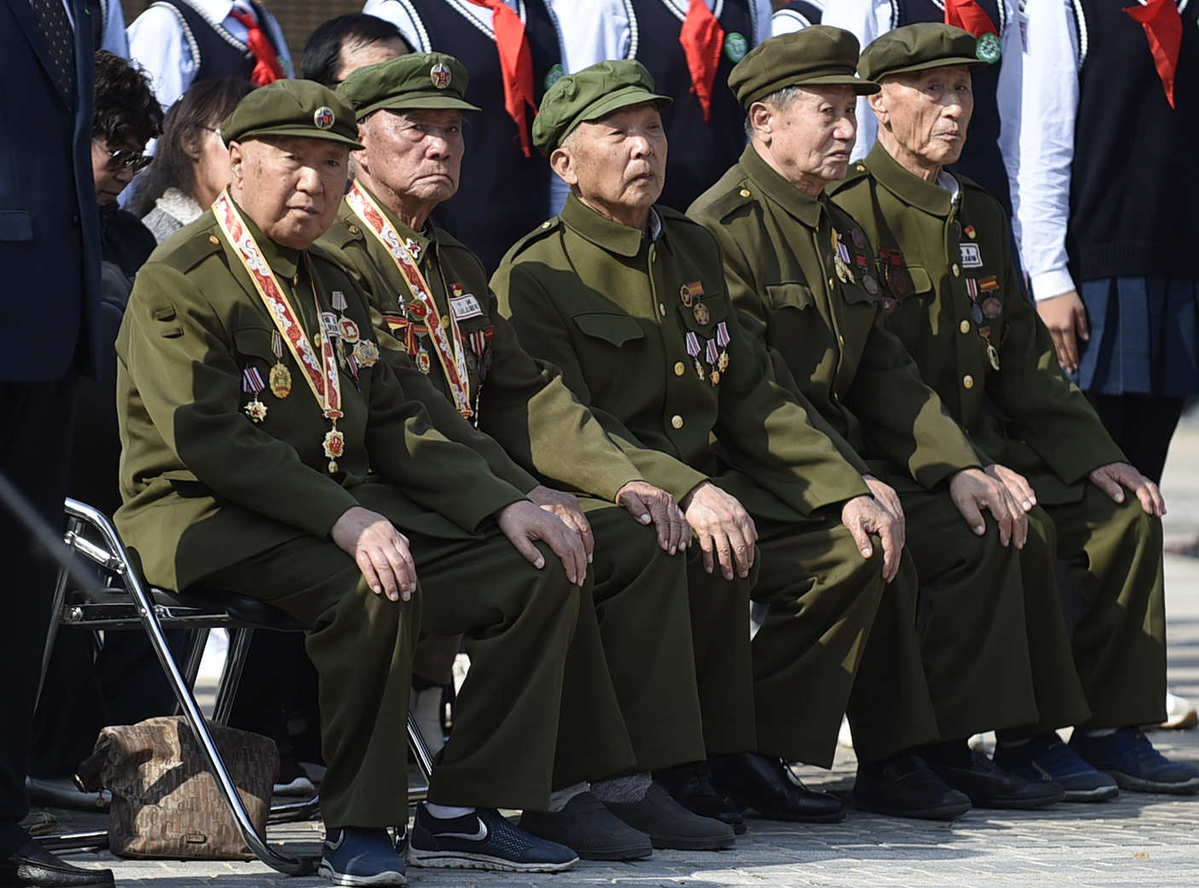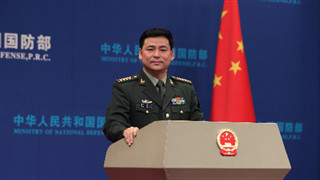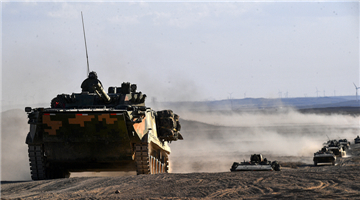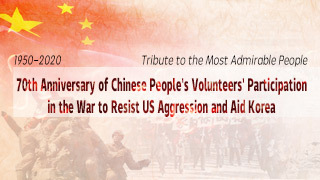
Valiant efforts recalled from Korean conflict
On a sunny morning in October last year, retired army officer Lyu Pin reunited with his regiment's honor flag in Tian'anmen Square in Beijing.
It was nearly 69 years since Lyu saw his young soldiers thwart numerous attempts by better-armed troops from the United States Army to take a strategically important hill on the southern banks of the Han River during the War to Resist US Aggression and Aid Korea (1950-53).
The wording on the red honor flag states that The Regiment of Mount Baegun, a peak on the Korean Peninsula also known as Baegunsan, serves as a reminder of the fierce battles fought by brave warriors commanded by the then-26-year-old Lyu during the conflict.
On Oct 1 last year, the flag, along with 99 others from the Chinese military, was displayed by troops on armored vehicles passing along Chang'an Avenue in central Beijing during a grand parade to mark the 70th anniversary of the founding of the People's Republic of China.
Lyu, 95 at the time, was invited to the parade, which he watched from an open-top bus with other war heroes and the offspring of founders of New China.
Tens of thousands of people attending the celebration, which took place on National Day, stood as Lyu and his comrades appeared. They applauded and cheered to show their respect to the elderly heroes.
Lyu wept as he saw the cheering crowd and the Tian'anmen Rostrum.
The veteran, who lives in Shenyang, capital of Liaoning province, said:"History remembers the Battle of Mount Baegun. The motherland and the people will never forget those who sacrificed their lives to safeguard the nation."
In October 1950, Lyu's unit, the 447th Regiment of the 149th Infantry Division, and other forces of the Chinese People's Volunteer Army entered the Democratic People's Republic of Korea to join the War to Resist US Aggression and Aid Korea.
In late January the following year, the regiment, in which Lyu served as a deputy political commissar, was ordered to hold Mount Baegun against opposing forces, mostly from the US Army's 3rd and 25th infantry divisions, which had strong air and artillery support.
"We were determined and ready to sacrifice our lives to defend our positions," Lyu said. "The enemy wanted to defeat us by frenziedly attacking our positions with countless bombs dropped from aircraft and with artillery, including napalm bombs. Enemy troops and tanks charged us many times each day."
Casualties in Lyu's unit soared as bloody fighting continued on several fronts.
Troops, platoon leaders and company commanders died. Positions were sometimes lost because nearly all the troops holding them had been killed.
However, Lyu said reinforcements soon arrived to repulse the enemy and regain territory. "I was with the commander of the 149th Infantry Division and often heard him ordering front-line officers: 'Take it back! Take it back! Take it back'," he said.
The intensity of some battles was "beyond imagination", he said.
"Nearly all the officers and troops in one of our companies died after holding their positions for five days and nights. After withstanding desperate enemy strikes for five days, only four out of the company's 100-plus members survived-one officer and three soldiers. They fulfilled their promise to keep the positions."











